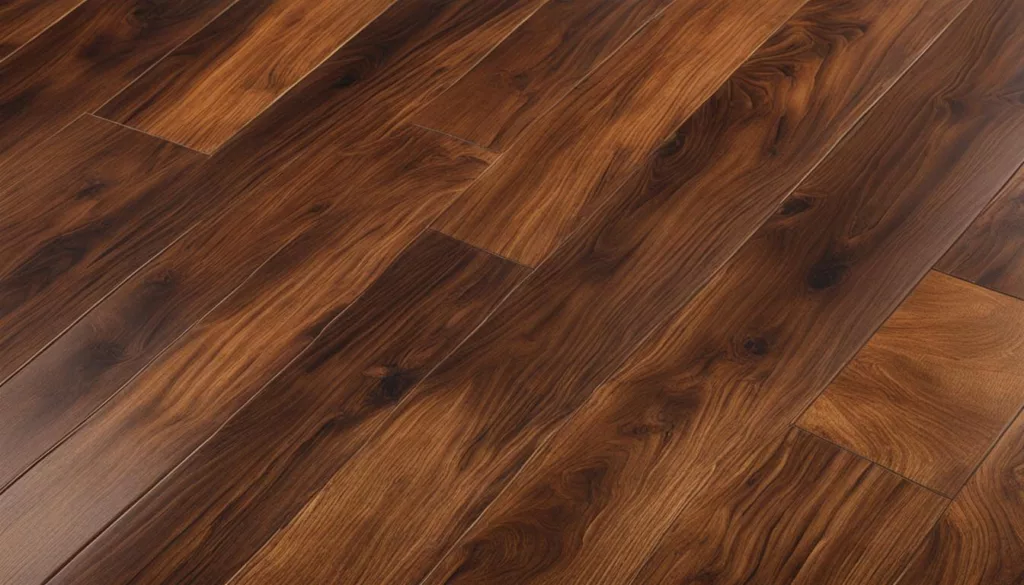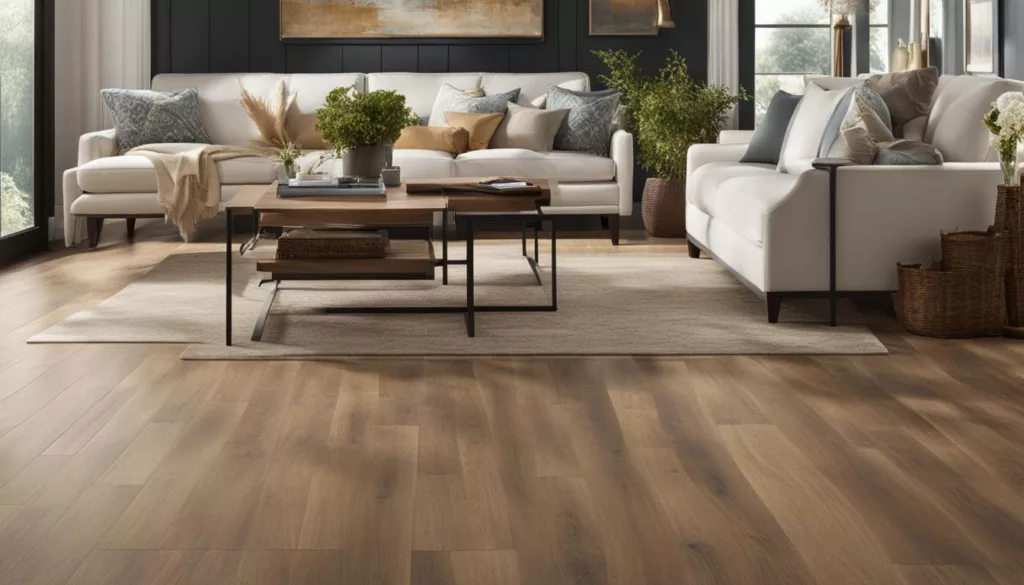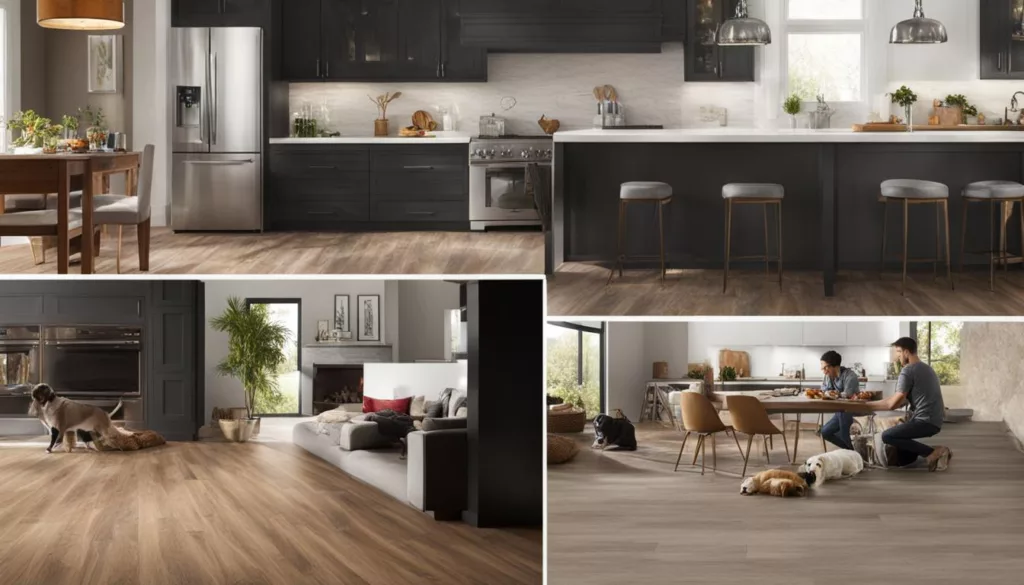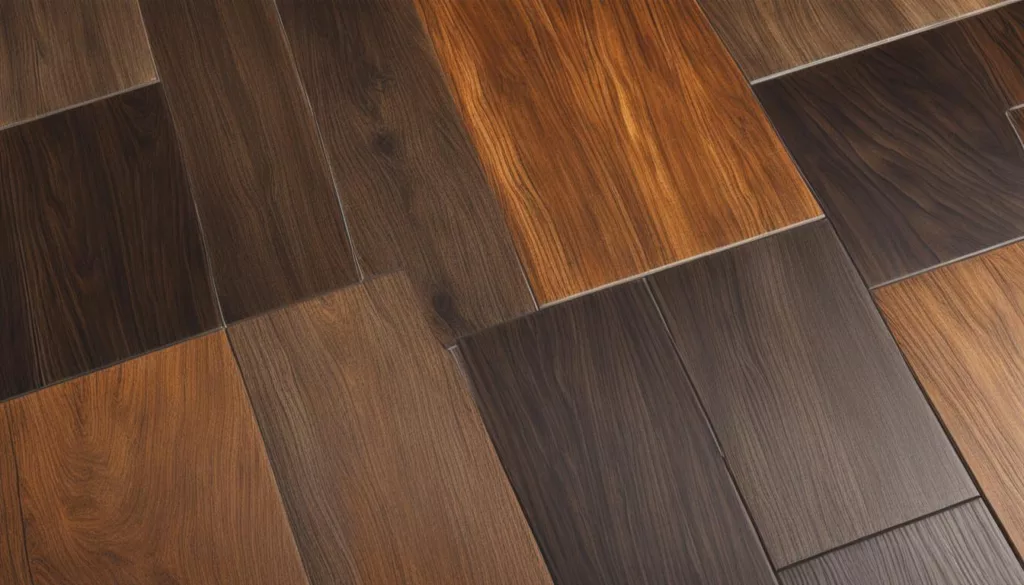Laminate Floor vs Tile or Stone
Choosing the right flooring for your home can be a daunting decision. With so many options available, it can be overwhelming to decide which material is the best fit for your needs. In this article, we will compare Laminate Floor vs Tile or Stone options to help you make an informed decision.


Key Takeaways
- Choosing the right flooring depends on personal preferences, budget, and lifestyle.
- Laminate flooring is affordable and easy to install, but may not have the same durability as tile or stone.
- Tile and stone flooring are durable and have a timeless appeal, but can be more expensive and difficult to install.
- The decision between laminate flooring and tile or stone ultimately depends on what suits your needs best.
Understanding Laminate Flooring
In this section, we will explore laminate flooring in detail. Laminate flooring is a popular flooring option for households across the United States due to its durability, affordability, and ease of installation.
Laminate flooring is an engineered product made up of multiple layers. The top layer is a transparent, protective wear layer that shields the laminate from scratches, fading, and staining. Below the wear layer is the decorative layer, which can imitate a wide range of natural materials such as wood or stone. The core layer, made of high-density fiberboard (HDF), provides stability and moisture resistance.
The installation of laminate flooring is generally straightforward, making it an ideal choice for DIY enthusiasts. Laminate flooring can be installed over most subfloors, and no specialized tools or adhesives are needed. The laminate planks snap together using a tongue-and-groove locking system, meaning that minimal glue is needed, further speeding up the installation process.
One of the biggest advantages of laminate flooring versus tile or stone options is its durability. With proper care, laminate flooring can last up to 25 years and can withstand high-traffic areas, scratches, and spills well.
When it comes to maintenance, laminate flooring is relatively easy to clean. Regular sweeping or vacuuming removes dirt and debris, while a damp mop with a mild cleaner keeps the floor looking its best. However, it is important to avoid saturating the floor with water, as it can cause damage to the HDF core layer.
Laminate flooring is available in a wide variety of designs and colors, making it a versatile flooring option that can match most home decor styles. Whether you want a rustic, natural wood look or a sleek, modern stone finish, there is a laminate flooring option to suit your needs.
Overall, laminate flooring is a robust, versatile, and cost-effective flooring option that is well-suited for many households. By understanding its characteristics, you will be able to evaluate whether laminate flooring is the right option for you.


Exploring Tile and Stone Flooring
In this section, we will take a closer look at the properties of tile and stone flooring as part of the broader comparison of Laminate Floor vs Tile or Stone. While some homeowners prefer the durability and natural beauty of stone, others opt for the variety of design, installation, and maintenance options that tile offers. Understanding the benefits and drawbacks of each is vital to making an informed choice.
Tile flooring comes in a wide range of materials, from ceramic to porcelain, to natural stone. Ceramic tiles are the most common due to their cost-effectiveness, broad color variety, and durability. Porcelain tiles are denser, more wear-resistant, and have lower water absorption rates, making them ideal for areas with high foot traffic or exposure to moisture. Meanwhile, natural stone tiles (such as granite, travertine, and marble) offer unmatched uniqueness and strength for both indoor and outdoor applications.
Stone flooring is another popular option, with materials like slate, quartzite, and limestone presenting endless possibilities for homeowners. Stone offers a natural look and feel that can’t be replicated, making it an excellent option for rustic, traditional, or minimalist designs. While pricier than ceramic tiles, stone tiles are highly durable, adding long-lasting value to any home.


| Tile Flooring Pros | Tile Flooring Cons | |
|---|---|---|
| Material Variety | – Wide selection of colors and designs | – Ceramic tiles may chip or crack if a heavy object falls on them |
| Water Resistance | – Porcelain tiles are highly impervious to water | – Grout lines can absorb moisture if not sealed properly |
| Durability | – Ceramic, porcelain, and natural stone tiles withstand heavy foot traffic and wear | – Natural stone tiles require periodic resealing and maintenance |
| Maintenance | – Relatively easy to clean and maintain | – Grout can become stained or discolored over time |
| Installation | – DIY-friendly, with interlocking tiles and snap-together systems available | – Installation costs can be higher if working with elaborate designs or complicated layouts |
Note: Always check the manufacturer’s recommendations for cleaning and maintenance of tile types to keep them in the best possible condition.
- The pros and cons of stone flooring:


| Stone Flooring Pros | Stone Flooring Cons | |
|---|---|---|
| Aesthetic Appeal | – Natural look and texture that offers timeless elegance | – Higher initial installation costs than other flooring options |
| Durability | – Resistant to scratches, chips, and cracks | – May be cold and uncomfortable to stand on for long periods |
| Variety | – Different types of stone, such as slate, quartzite, and limestone, allow for customizing floors to meet specific design needs | – Can be slippery when wet, requiring extra care in high-moisture areas |
| Value | – Adds long-lasting value to homes and increases chicness and charm | – Known to retain moisture and minerals, encouraging moss and algae growth |
| Maintenance | – Need minor upkeep in the form of sweeping and an occasional resealing with natural sealers | – Natural patterns can make stain removal difficult, with bleach or acidic cleaning agents causing damage to the flooring |
| Installation | – Can last several years when installed correctly | – Installation can be complicated due to the large size and weight of stone tiles |
Now that you have more knowledge about tile and stone flooring, we can compare it to laminate flooring. Let’s look into more details in the next section.
Comparing Laminate Floor vs Tile or Stone
When it comes to choosing between different types of flooring, it is important to weigh the pros and cons of each option. In this section, we will compare laminate flooring to tile and stone options to help you make an informed decision on the best choice for your home.
| Factor | Laminate Flooring | Tile Flooring | Stone Flooring |
|---|---|---|---|
| Cost | Low | Medium to High | High |
| Lifespan | 10-25 years | 20-50+ years | 50+ years |
| Maintenance | Easy to maintain, but may need to be replaced if damaged | Easy to clean, but grout may need maintenance | May require periodic sealing or polishing |
| Resistance to Moisture and Stains | Not recommended for areas with high moisture levels | Resistant to moisture, but grout may stain | Highly resistant to moisture and stains |
| Aesthetic Appeal | A wide range of styles and colors are available but may appear as synthetic | A wide range of patterns and textures are available but may require professional installation | Natural variation and warmth, but limited design options |
Based on these factors, it is clear that laminate flooring is a budget-friendly option with a shorter lifespan, while tile and stone options are more expensive but offer greater durability and resistance to moisture and stains. When it comes to aesthetic appeal, the choice ultimately comes down to personal preference and the specific design needs of the space.


Overall, the decision between Laminate Floor vs Tile or Stone should be based on a careful evaluation of the above factors, and the specific requirements of your home and family.
Conclusion
In conclusion, choosing between laminate Floor vs Tile or Stone ultimately comes down to personal preference and individual needs. Each option offers its unique advantages and disadvantages, and it’s important to weigh them carefully before making a decision.
For homeowners on a budget or looking for easy installation and low maintenance, laminate flooring may be the best option. It provides a cost-effective solution that mimics the look of pricier materials.
However, if you’re looking for durability, quality, and longevity, tile and stone flooring may be the better choice. While they are pricier up front, they can last for decades with proper care and maintenance.
When making your decision, consider factors such as your lifestyle, budget, and design preferences. Weigh the pros and cons of each option to find the best fit for your home.
Overall, whether you choose Laminate Floor vs Tile or Stone, remember that your flooring choice can have a significant impact on the look and feel of your home. Take the time to research and choose the option that best suits your needs for years to come.


FAQ
Is laminate flooring more affordable than tile or stone?
Yes, laminate flooring is generally more affordable than tile or stone. While the exact cost will depend on the specific products and brands you choose, laminate flooring is generally less expensive to purchase and install compared to tile or stone options.
Are laminate floors resistant to moisture and stains?
Laminate floors are generally resistant to moisture and stains, but not as much as tile or stone flooring. Laminate floors have a protective layer that helps to prevent damage from spills and stains, but excessive moisture can still seep into the seams and cause damage over time. It is important to clean up any spills or moisture promptly to maintain the integrity of your laminate floors.
Are tile and stone floors more durable than laminate flooring?
Yes, tile and stone floors are generally more durable than laminate flooring. Tile and stone flooring are known for their strength and ability to withstand heavy foot traffic. Laminate flooring, while durable, can be more prone to scratches and damage from sharp objects or heavy furniture.
Is laminate flooring easier to install compared to tile or stone?
Yes, laminate flooring is typically easier to install compared to tile or stone. Laminate flooring often comes in interlocking planks or tiles that can be installed without the need for mortar or adhesive. Tile and stone flooring, on the other hand, require more labor-intensive installation processes, such as applying mortar and grouting.
Can I achieve the same aesthetic appeal with laminate flooring as I can with tile or stone?
While laminate flooring comes in a wide range of designs and styles that can mimic the look of tile or stone, it may not offer the same level of authenticity and natural beauty. Tile and stone flooring are known for their unique patterns and textures, which can enhance the overall aesthetic of a space.
Which flooring option requires less maintenance, Laminate Floor vs Tile or Stone?
Generally, laminate flooring requires less maintenance compared to tile and stone options. Laminate floors can be easily cleaned with regular sweeping and occasional mopping. Tile and stone flooring may require more frequent cleaning and maintenance, such as sealing and grout cleaning, to maintain their appearance and durability.
Thanks For the Great Attention!
Also, Read,





Cool website.
Cool website.
I really liked your site. Do you mind http://fertus.shop/info/